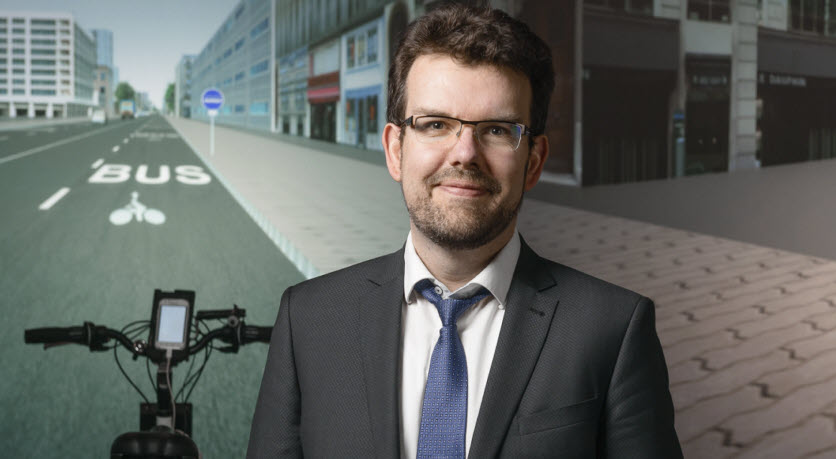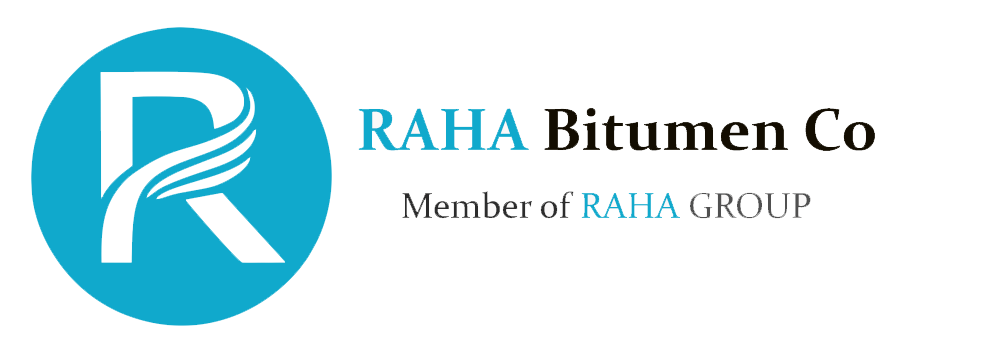SMART ROADS

BITUMEN KEY TO SMART ROADS
Leading an ambitious research programme, Nicolas Hautière of IFSTTAR is eager to demonstrate the viability of future fth generation roads.
Our goal is to find solutions for new roads and for the transformation of existing roads that will enable us to establish a road network that meets the needs of the future. Most of the roads we use today are safe for both users and the environment,” says Nicolas Hautière.
The director of the research programme R5G (5th Generation Road) at IFSTTAR, the French Institute of science and technology for transport development and networks, Nicolas Hautière wants to see these new roads equipped with an increasing number of smart services.
An artificial intelligence specialist with a PhD in computer vision, he has had to broaden his eld of expertise to lead the multi-disciplinary research programme.
Resting on three main pillars, R5G has established a holistic approach to the design, construction and operation of roads, and bitumen plays a central role for all three of these broad, inter-dependent elements – ecology, energy and information and communication technology (ICT).
“Ecology and the environment are increasingly important considerations. We need to use materials that t into a modern circular economy. This makes sense from both an environmental and an economic perspective.”
Smart Roads
New kinds of bitumen can also help improve the resilience of road surfaces, making these more energy-efficient. However, if surfaces could also be used for harvesting energy, the gain would be two-fold. For instance, solutions for the harvesting of solar energy require the development of new bitumen additives that will enable and enhance the necessary energy exchange.
“In the future, the use of combustion engines are likely to be forbidden in urban areas. Instead, electric vehicles will be used and perhaps the road surface can help recharge these vehicles.”
Bitumen will be important also for the ICT pillar. In order to implement new services utilizing technology based on the Internet of Things (IoT), various sensors will need to be embedded in the road surface.
“Sensors and IoT can be used to determine when it is time for repair or maintenance work,” says Nicolas Hautière.
Enabling roads to self-diagnose, such IoT technology could help ensure that road surfaces remain permanently optimal irrespective of, for instance, climatic variations such as temperature and humidity. However, IoT has the potential to realize a whole host of other digital services and applications, some of which are yet to be imagined.
IFSTTAR’s R5G venture is closely linked to the European ‘Forever Open Road’ programme set up and managed by the Forum of European National Highway Research Laboratories (FEHRL). Nicolas Hautière calls R5G “the French version”.
“We collaborate with over 20 labs all over Europe, but we also cooperate with organizations in the US and with international road associations,” he says.
In common with the European programme, R5G has adopted a three-pronged approach to foster the implementation of ground-breaking technologies. This approach involves combining the components of innovative solutions in full-scale demonstrators in order to evaluate the synergies between them and to propose comprehensive solutions that are appropriate for deployment on a larger scale. “The demonstrators help us test the new technology and explain to users how it works. However, it will probably be decades before fifth generation roads are fully implemented on a national scale,” says Nicolas Hautière.

